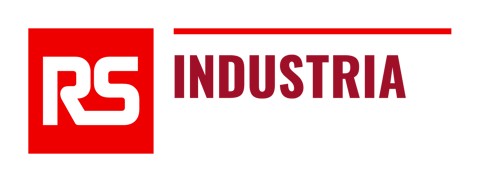
Once your organisation realises that an IIoT system could resolve your biggest process pains, the next step is choosing a solution.
Some organisations may consider building their own IIoT system, using the knowledge of their internal engineering and IT teams. However, this is far from a straightforward task.
Building an IIoT system requires sizeable investments in technology, resources, and expertise. Before you get started, it’s vital to know exactly what will be required at every part of the journey, so you can fairly assess whether this is a manageable project to take on in-house.
The 12 Steps to Successfully Building & Implementing IIoT
Think you’re ready to create your own IIoT system? Make sure you’re familiar with what the process involves first. It might be more exhaustive than you assumed…
- Define the scope of the project.
What problem are you trying to solve with IIoT?
What are the objectives, and do you have internal agreement on them?
- Pull together the project team.
Do you have all the right skills in-house - or just those available?
Will this be headed up by a senior manager, or is it an assignment for a new engineering graduate to explore?
- Research the market.
What are you looking for, and how do you understand what you need?
If you need to find suppliers, how will you assess them?
- Design the end-to-end IIoT solution.
The final solution is likely to include…
- Sensors
- Data networks
- Edge Gateway hardware
- Protocol translations
- Internet communications
- Cloud infrastructure
- Data lake
- Visualisation platform
- Alerting system
- End-to-end security
Multiple skill sets are required to successfully navigate all technology for each stage of the system.
Do you have this range of expertise in-house – and, crucially, will they have the capacity to participate? Can the suppliers help?
How will you coordinate all of these different disciplines into a coherent project?
- Conduct an IT review.
When do you involve the IT department? Are they seen as enabling and do they have legitimate concerns with security and the long-term IT architecture of the business?
Will they require design amendments or just veto the project, after all the time and effort you’ve spent to get it off the ground?
- Amend parts of the solution design to meet IT requirements.
Does your team understand all the ‘dimensions of concern’ that IT will have about IIoT?
Does IT fully understand IIoT, and the operational technology (OT) used in factory process systems?
- Contact vendors, purchase hardware and software elements.
You’ll need to organise multiple vendors to re-confirm compatibility, sort purchase arrangements with each one, and manage delivery.
- Integrate different elements into a working process.
This involves the integration of industrial data technology with internet communications and cloud systems. Does your team have this knowledge?
- Develop software applications on a cloud platform.
This is an ongoing process, requiring continual maintenance and development. You can’t just leave the platform to fend for itself!
- Run a pilot for three months.
Is the pilot generating the data required?
Is the business getting the value out of this information?
Who is assessing this on an ongoing basis?
- Scale-out across the business.
If successful, what are the plans to extend the system across the rest of the business? Each new asset or additional line may require new data protocols to be translated, new methods of monitoring to be applied, and yet more software development to process and present the results.
- Maintain the system.
Ongoing technical support and development will be required, even for simple systems. Will the original developers still be available to do this?
If you think this project will require a lot of manpower and investment, you’re correct. But it isn’t just a matter of finding the time and money – your team will need a very specific set of skills, too.
Skills Specific to IIoT
If you choose to build your own IIoT solution, there are a number of key specialist areas that are crucial to successful IIoT implementation. Since most manufacturing companies will not have the expertise in-house, they will need to work with partners with these specialist skills and knowledge. These include:
- OT/IT translations. Converting all the different data protocols from the diverse and ever-growing range of industrial machines is a full-time specialist activity. Integrating these online services is not often straightforward.
- Edge services. This involves taking the data from edge devices, translating it, then normalising the values ready for use in a data lake… then managing the data messaging, as well as continually checking that the onsite gateway hardware is live and fully functioning. This all takes specialist knowledge to set up and software to continually process.
- Cyber security. In the face of ever-changing threats, you must maintain the security of your process chain through near-constant patches and penetration testing.
- Predictive analytics. One of the core benefits of continuous monitoring of industrial assets is the 24/7 assessment of asset condition. Couple this with ML-based alerting and prediction, and the much-hyped ‘Industry 4.0’ starts to become a reality, enabling pre-emptive action to avoid machine failures and costly downtime. If you can’t deliver predictive analytics, you’ll massively fall short of a valuable IIoT system.
- Skills to continually maintain the system. The ongoing commitment to maintaining a system and keeping it current and secure is huge. This problem only becomes more acute when the organisation decides to scale it out across multiple assets and sites.
The steps and skills to creating a successful IIoT system can’t be understated.
That’s why RS Industria is built for engineers, by engineers.
Our solution is underpinned by an amazing team of engineering experts, with deep knowledge of your industry. On the route to ease your pains – such as high energy costs, high emissions and unplanned downtime - it’s our priority to walk alongside you, every step of the way.
Our blend of strategic consultancy, design and onboarding will ensure you have the right solution – without exposing yourself to the cost and risk of building an IIoT system yourself. Furthermore, our customer success team will make it their priority to ensure you get value and continuous improvement, long after installation.
Ready to learn more?
Read on to ‘Build vs Buy’.

